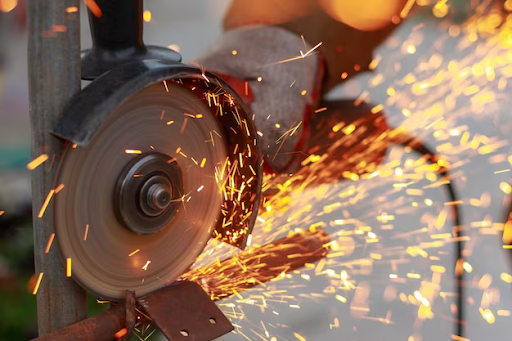Beyond Hardness: The Versatility of Metal Bond Diamond Tools

Diamonds have long been recognized as one of the hardest materials on Earth, and harnessing their exceptional properties for industrial applications has led to the development of metal bond diamond tools. While hardness remains a key characteristic, the versatility of these tools extends far beyond mere resistance to wear. This article explores the multifaceted nature of metal bond diamond tools, examining their composition, applications, and the diverse industries that benefit from their exceptional capabilities.
Understanding Metal Bond Diamond Tools
Metal bond diamond tools are a type of cutting tool where diamond particles are bonded to the tool’s matrix using metal, typically cobalt or nickel. This bonding process results in a tool that combines the hardness of diamonds with the toughness and durability of the metal matrix. The resulting tools exhibit exceptional wear resistance, high thermal conductivity, and the ability to withstand heavy loads during machining.
Composition of Metal Bond Diamond Tools
The composition of metal bond diamond tools involves a careful balance between the diamond particles and the metal matrix. Key components include:
- Diamond Particles: The diamonds used in these tools vary in size and quality, and they are strategically embedded in the metal matrix. The diamond’s hardness allows for effective material removal during cutting or grinding processes.
- Metal Matrix: Typically composed of cobalt or nickel, the metal matrix plays a crucial role in holding the diamond particles in place. It provides toughness and durability to the tool, ensuring that it can withstand the stresses encountered during machining.
- Binder Phase: In addition to diamonds and the metal matrix, a binder phase is often present. This phase helps maintain the structural integrity of the tool, preventing premature wear and ensuring consistent performance.
Applications of Metal Bond Diamond Tools
Metal bond diamond tools find extensive use across various industries due to their versatility and exceptional performance. Some key applications include:
- Stone and Concrete Cutting: In the construction industry, metal bond diamond saw blades are used for cutting hard materials such as granite, marble, and concrete. Their durability and precision make them indispensable in tasks like tile cutting and shaping.
- Precision Grinding: Metal bond diamond grinding wheels are widely employed in precision grinding applications. Whether it’s shaping carbide tools or achieving fine surface finishes on hard materials, these tools excel in tasks that demand accuracy.
- Electronics Manufacturing: Metal bond diamond tools play a crucial role in the manufacturing of electronic components. From cutting silicon wafers to shaping intricate parts, the precision offered by these tools is vital in the electronics industry.
- Glass Processing: Metal bond diamond tools are used in glass cutting and shaping processes. Their ability to maintain sharp edges and provide a smooth finish is essential in the production of glass components for various applications.
- Natural and Engineered Stone Fabrication: In the stone fabrication industry, metal bond diamond tools are employed for tasks such as profiling, shaping, and polishing natural and engineered stones. Their durability and precision are crucial for achieving intricate designs.
Versatility in Material Compatibility
One of the standout features of metal bond diamond tools is their ability to work across a wide range of materials, from hard and brittle to soft and ductile. This versatility makes them indispensable in industries where the machining of diverse materials is a common requirement. Some materials where metal bond diamond tools demonstrate exceptional performance include:
- Hard Alloys: Metal bond diamond tools are highly effective in machining hard alloys such as tungsten carbide and high-speed steel. They provide the necessary hardness and abrasion resistance to handle these challenging materials.
- Ceramics: In the ceramics industry, where precision and wear resistance are critical, metal bond diamond tools are used for cutting, shaping, and grinding ceramic components.
- Composites: The aerospace and automotive industries utilize metal bond diamond tools for machining composite materials. These tools offer the required precision and durability when working with composite structures.
- Hardened Steels: Machining hardened steels presents a challenge due to their high hardness. Metal bond diamond tools, with their exceptional hardness and wear resistance, are well-suited for this task.
- Semiconductor Materials: Metal bond diamond tools play a vital role in the semiconductor industry, where precision is paramount. They are used for cutting and shaping materials like silicon and gallium arsenide.
Factors Influencing Performance
Several factors contribute to the performance of metal bond diamond tools, and understanding these variables is crucial for optimizing their effectiveness:
- Diamond Grit Size: The size of the diamond particles in the tool affects its cutting efficiency. Finer grit sizes are suitable for achieving smoother finishes, while coarser grit sizes excel in material removal.
- Bond Hardness: The hardness of the metal matrix is a critical factor. Softer bonds are more suitable for cutting hard materials, while harder bonds are preferred for cutting softer materials. Achieving the right balance is essential for optimal performance.
- Coolant and Lubrication: Effective cooling is essential to prevent overheating during machining. Coolants and lubricants help dissipate heat, extending tool life and ensuring consistent performance.
- Machine Parameters: The speed, feed rate, and depth of cut during machining influence the performance of metal bond diamond tools. Optimizing these parameters for specific applications is key to achieving desired results.
Advancements in Metal Bond Diamond Tool Technology
The field of metal bond diamond tools is not static, and ongoing research and development lead to continuous advancements. Some notable trends include:
- Multi-Layered Diamond Tools: Manufacturers are exploring the development of multi-layered metal bond diamond tools. These tools feature different layers with varying diamond sizes and concentrations, optimizing their performance for specific machining tasks.
- Engineered Metal Matrices: Advancements in metallurgy lead to the development of engineered metal matrices with improved properties. These matrices aim to enhance the overall durability and toughness of metal bond diamond tools.
- Advanced Manufacturing Techniques: Innovations in manufacturing processes contribute to the production of more precise and consistent metal bond diamond tools. Computer-controlled machining and advanced sintering technologies are examples of techniques that enhance tool quality.
- Tailored Solutions for Specific Industries: There is a growing trend towards developing metal bond diamond tools tailored to the unique requirements of specific industries. Customized solutions take into account the material characteristics, machining parameters, and desired outcomes for optimal performance.
- Integration of Smart Technologies: The integration of sensors and monitoring systems into metal bond diamond tools allows real-time tracking of key parameters. This smart technology enables operators to make informed decisions, optimizing tool performance and preventing issues like tool wear or breakage.
Conclusion
Metal bond diamond tools have transcended their reputation as mere products of extreme hardness. Their versatility, demonstrated across diverse industries and materials, makes them indispensable in modern machining applications. From the precision demanded in electronics manufacturing to the robustness required in cutting hardened steels, metal bond diamond tools offer a unique combination of hardness, durability, and adaptability.



